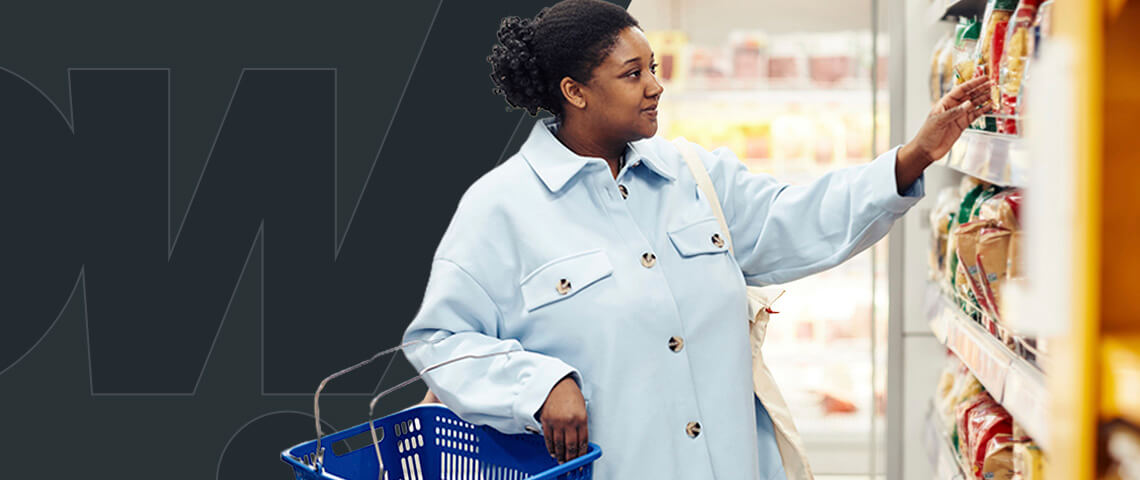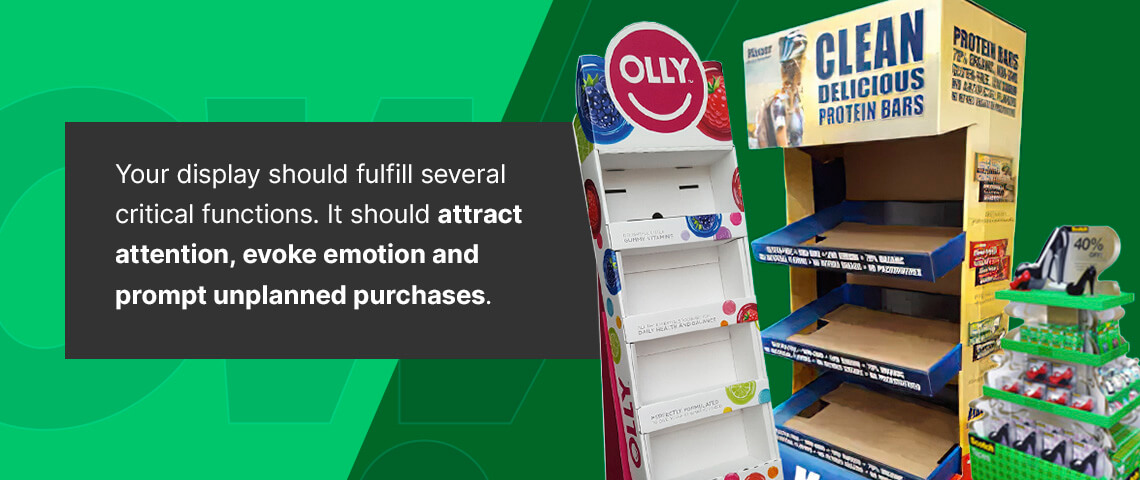We’ve all walked into a store and walked out with something we had no intention of buying. Impulse buying is the spontaneous buying of an item without prior planning or intention. Understanding what an impulse purchase is and why retail impulse displays tempt us is essential to drive sales. With 64% of adults in the United States reporting an increase in their impulse spending in 2022, it’s a phenomenon worth leveraging.
Why Do We Impulse Buy?
Impulse buying is related to internal factors like emotions and external factors like stimuli from the immediate environment. There’s a distinct connection between impulse buying and emotions, so when we see something, it has to elicit an emotional response that makes us want to buy it. There are many reasons we impulse buy, such as:
- Feeling like you’re getting a deal: Price-conscious consumers are likely swayed by the concept of not paying full price. They may not have planned to buy an item, but when they see it’s discounted, they feel they must have it.
- Responding to external stimuli: Walking into a store is a sensory experience, and the right combination of background music, the store environment, visual stimuli, and the salespeople can subtly encourage customers to purchase.
- Seeking instant gratification: Our brains are in a constant battle between the desire for instant gratification and prioritizing long-term goals. In short, impulse buying releases dopamine, which makes people feel good. In a retail environment, customers may crave dopamine more than they want to avoid making the purchase.
- Enjoying novelty: If customers see something new and different from what they expect, it can trigger an impulse to purchase.
- Experiencing product placement: Window and point-of-purchase displays can evoke an emotional response that lifts consumers’ moods and results in purchases.
What Is an Impulse Retail Display?
Retail impulse displays are strategically designed visual representations of a product that encourage customers to purchase impulsively. They grab customers’ attention, and when appropriately executed, increase brand awareness, boost sales and drive revenue.
Most retail impulse displays are freestanding and designed by professionals to leverage certain products and promotions. Placing impulse items at checkout — also known as point-of-purchase displays — is an effective strategy for encouraging impulse purchases and creating a positive brand image.
Design Tips for Creating Impulse Displays
Using the right design can result in several purchases of impulse convenience goods. The following tips and tricks form an excellent starting point to create compelling designs and encourage impulse purchases:
1. Think About Location
Location is vital to creating successful impulse displays. Depending on your product and price range, there are several approaches to choosing the right site to boost your sales and brand awareness:
- Checkout: Placing items near the checkout can leverage the customer’s buying mindset. Placing lower-priced impulse displays near the checkout allows them to make smaller purchases without too much consideration. You can also use impulse displays at checkout for sale items.
- High-demand items: You can often entice customers to impulse buy by positioning your display near in-demand items they may have come into the store to buy. This method works exceptionally well if the items are complimentary, like candles and matches. Although your display isn’t at the checkout, you can still benefit from the traffic high-demand items create.
- Aisle ends: Placing your display at the end of the aisle encourages customers to pause and take a closer look, strengthening the chances of an impulse purchase.
- Entrance and exit: The doors in and out of the store have some of the highest traffic, so having a display that draws customers’ eyes as they enter or just before they leave can keep your product at the top of their minds and result in impulse purchases.
- Windows: A well-thought-out, visually appealing window display can draw in passersby.
2. Give Customers a Map
Maximizing the value of your impulse displays involves carefully choosing the right products and placement. Using specific store layouts as a baseline, you can create a map for people to follow in stores, making foot traffic past your high-demand and impulse purchase items more predictable.
Designing a strategic path for customers gives you insights into where customers take their time and when they need a visual break. This information is critical to determine the best placement for impulse displays.
3. Choose the Right Products
Your display and chosen products work together to create the urge to purchase in customers. There are many ways to choose the right products to work with your displays and create impulse purchases, some of which include:
- Seasonal products: Aligning your display with the seasons appeals to people’s emotions. They’re excited to buy travel items during the summer or make a festive connection in the winter. Customers could make emotional purchases if your display resonates with them at a specific time of year.
- Topical products: Matching your products with a current event can have a similar effect to the one described above. Consider matching waterproof gear during heavy rains or your products to specific events and holidays.
- Complementary products: Focusing on products that complement one another, like sunscreen and caps, can prompt customers to make impulse purchases.
- Sale items: Choosing the right products for sale attract customers looking for a deal.
Pay attention to retail trends and identify popular products that sell fast, as this information can help you make the right product choices for your impulse displays.
4. Match the Type of Display
Your display should fulfill several critical functions. It should attract attention, evoke emotion and prompt unplanned purchases. There are many types of displays you can use to show buyers the benefits of your products:
- End-of-aisle displays
- Floor displays
- Counter displays
- Eye-level displays
- Point-of-sale displays
5. Consider Branding, Promotion and Customization
Always keep the customers in mind when designing impulse displays. Consider what customers are looking for when they enter a retail store and how you can make your displays more appealing than your competitors’ displays.
One of the most significant benefits of impulse displays is that you can customize them to reflect your brand and meet your customers’ needs. Maintain consistent branding regardless of the store to develop a sense of familiarity with your customers. Impulse displays also occupy prime retail space, which you can leverage for special offers and seasonal offerings to evoke emotion in your customers.
6. Keep It Simple
Clean, simple designs that catch people’s attention are often more successful than busy, complex displays. Your design must make your product the hero of the display, allowing your message to reach customers unencumbered by overly complex graphics.
An effective combination of colors and eye-catching images catches customers’ attention straightaway. It encourages them to explore your product and message. Think of ways to make your display unique and visually appealing without making it so complicated that customers lose interest.
7. Talk to the Experts
Creating effective impulse displays is strategic. You can avoid ineffective displays by consulting display experts who know what displays work best in different environments, so they can guide you from the design phase and ensure your displays drive sales and brand awareness.
Create Custom Impulse Displays With Creative Displays Now
Designing impulse retail displays can be challenging. However, when executed correctly, you can appeal to customers visually and emotionally, encouraging them to purchase your product.
With almost 60 years of experience in the display and packaging business, Creative Displays Now has the expertise to help you create effective impulse displays, from design to distribution. Our understanding of display specifications for major retailers is instrumental in crafting displays that work for your business and customers.
Contact us today to learn more about creating custom impulse displays for your business.




